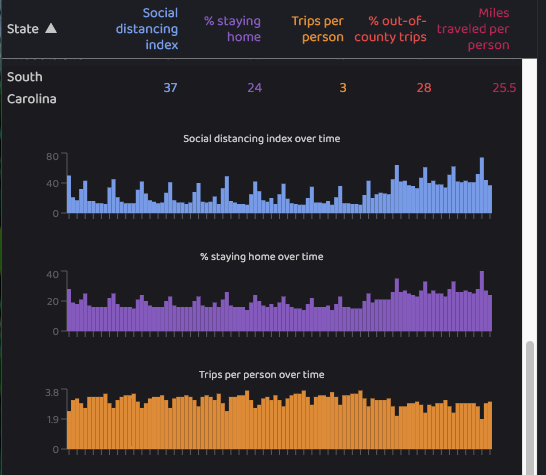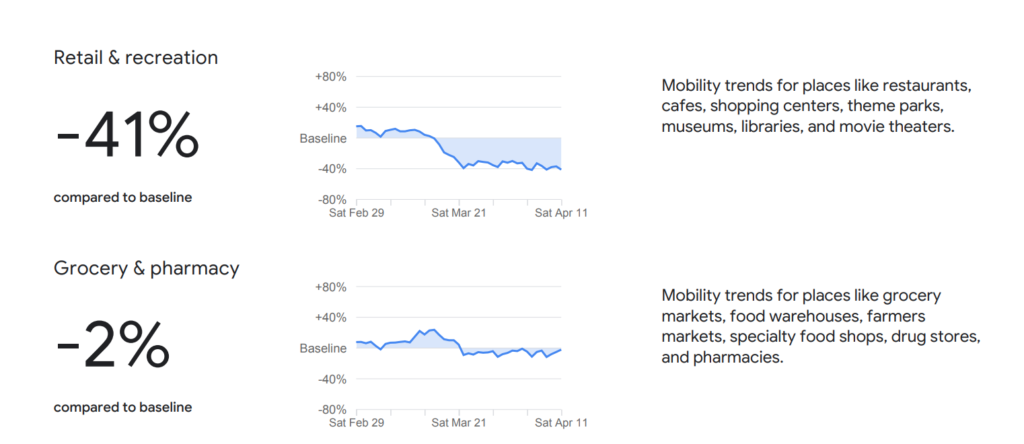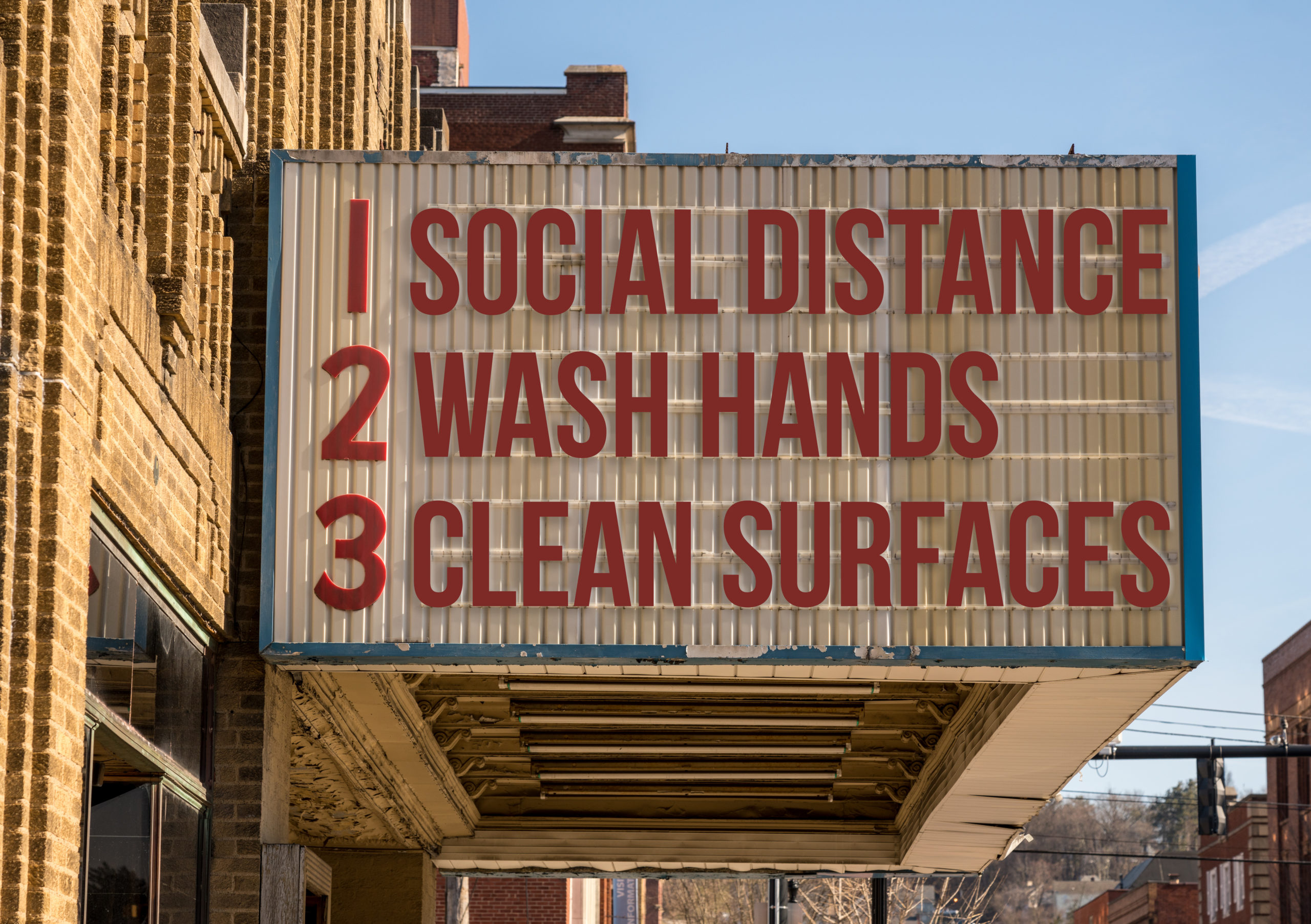It’s been 11 days since Gov. Henry McMaster issued a “home or work” executive order to help fight the spread of coronavirus in South Carolina.
Because it takes two to 14 days for people who have contracted COVID-19 to develop symptoms, and several more days (and sometimes weeks) for test results to come back, it’s hard to measure whether or not the order has effectively reduced the spread of the disease.
Officials at the Medical University of South Carolina (MUSC) said this week that there is evidence that social distancing “has reduced the growth of new cases substantially.”
In a news release, MUSC officials said they expect a surge in COVID-19 patients in the next few weeks, but that surge isn’t expected to overwhelm MUSC hospital resources.
Experts warn that it would be dangerous to let up on social distancing now, and the spikes we are seeing now would be much greater if we went back to our old ways.
“Vigilance is needed to assure that the COVID-19 transmission remains controlled,” MUSC officials said in a news release. “If social distancing is reduced now, new cases could grow quickly.”
New projections show that South Carolina could be past the peak of the illness.
Looking at South Carolina Department of Health and Environmental Control (SCDHEC) data, South Carolina hasn’t exactly flattened the curve yet. While the Palmetto State started to show some progress earlier this week with four days in a row at less than 150 coronavirus cases, the number of new cases jumped again to 276 on Thursday. SCDHEC expert Dr. Linda Bell said that this is normal and daily cases and deaths will fluctuate.
While it’s still too early to tell if McMaster’s home or work order is reducing the number of cases, real-time studies tracking location data and movement can tell us if the order is having an effect on social distancing.
Three data sets from Google, the University of Maryland, and Unacast, show that South Carolinians have barely changed travel behaviors since the order was issued.
No. 49 in the Nation?
Recently released data from the University of Maryland ranks South Carolina 49th in the nation at social distancing.
The University of Maryland study, using real-time data aggregated from mobile devices and government agencies to calculate states’ social distancing scores, ranked S.C. as the No. 49th state in the nation as of the latest data set on April 14.
The data calculates a social distancing score for each state daily by combining statistics of the percentage of people staying home, trips per person, percentage of out-of-county trips, non-work trips per person, and new COVID-19 cases.

The data shows that the Palmetto State has made some progress since the “home or work” order was issued.
In the week before the stay-at-home order was issued, South Carolina’s social distancing score was one of the lowest in the nation — 44 out of 100 — with 27 percent of people staying home, an average of 2.8 trips per person, 27 percent of the trips taken were out-of-county, and an average of 23.7 miles traveled a person.
In the week after the order was issued, South Carolina scored a 47 out of 100 with 28 percent of people staying home, 2.8 trips per person, 27 percent of trips out-of-county, and 22.2. average miles traveled a person.
South Carolina’s most recent social distancing score —37 out of 100 — puts the Palmetto State at the very bottom of the list, with Arkansas being the only state with a worse score.
What Google Says
Between April 5 (the day before McMaster’s order) and April 11, South Carolinians increased their retail and recreation trips by 1 percent. This includes trips to places like restaurants, theaters, shopping centers, and theme parks (most of which should be closed).
Overall, South Carolinians have reduced their retail and recreation trips by 41 percent between February and April 11. Across the U.S., Americans have reduced their retail and recreation travel by 45 percent.
Google’s mobility report compares movements with an established baseline that includes five weeks of data from January to February.

South Carolinians also increased their trips to the grocery store and pharmacies by 9 percent between April 5 and 11. According to Google’s data, South Carolinians have barely reduced their trips to the grocery stores and pharmacies compared to the established baseline. The report shows only a -2 percent difference from the pre-COVID baseline and April 11.
While most public parks have closed, Google shows that South Carolina residents have only reduced their visits to parks and beaches by 24 percent.
Beaches in South Carolina were a particular concern cited by McMaster in late March. Dozens of concerning photos surfaced online showing large crowds on public beaches forced McMaster to close down all access points to public beaches in South Carolina, however, beaches can still be accessed by private property.

South Carolinians have made more work-related trips between April 5 and 11, Google’s data shows a 4 percent increase in workplace mobility. Compared to earlier in 2020, South Carolinians have reduced their work-related trips by 34 percent, which is consitant with the U.S. average of -34 percent.
‘D-‘ in Social Distancing
Unacast, company that purchases data from cell phone companies, gave South Carolina a “D-” in social distancing. That grade has been mostly consistent since before and after the April 6 order.
According to the data, the following counties got an “F” rating for only reducing the their average mobility by less than 25 percent (based on distance traveled):
- Darlington
- Oconee
- Dorchester
- Berkely
- Greenwood
- Aiken
- York
- Cherokee
- Pickens
- Anderson
- Kershaw
- Horry
- Florence
- Spartanburg
- Lexington
- Sumter
It’s hard to say how much weight this data carries — two of those “F” counties (Kershaw and Sumter) have some of the highest coronavirus cases per capita in the state. But four of those “F” counties (Aiken, Pickens Greenwood, and Oconee) report having some of the lowest COVID-19 cases per capita in South Carolina.
Many of the counties with low cases and what’s considered a low social distancing score are rural counties. People in rural counties have to travel longer distances to places like the grocery store.
Nationally, South Carolina ranks 37th in the nation for social distancing, according to Unacast’s data.
As of Wednesday, South Carolina ranked 38th in the nation for coronavirus testing per capita.
SCDHEC predicts that South Carolina will have seen a total of 8,677 cases by May 2.
According to the latest projections from the Institute for Health Metrics and Evaluation (IHME) in Seattle, Washington, 680 South Carolinians are expected to die from COVID-19. However, the model projects that nearly three times that amount of people — 2,042 — could die from the virus by August.
IHME predicts COVID-19 will hit its peak in South Carolina between April 30 and May 2.
***
WANNA SOUND OFF?
Got something you’d like to say in response to one of our articles? Or an issue you’d like to address proactively? We have an open microphone policy! Submit your letter to the editor (or guest column) via email HERE. Got a tip for a story? CLICK HERE. Got a technical question or a glitch to report? CLICK HERE.

